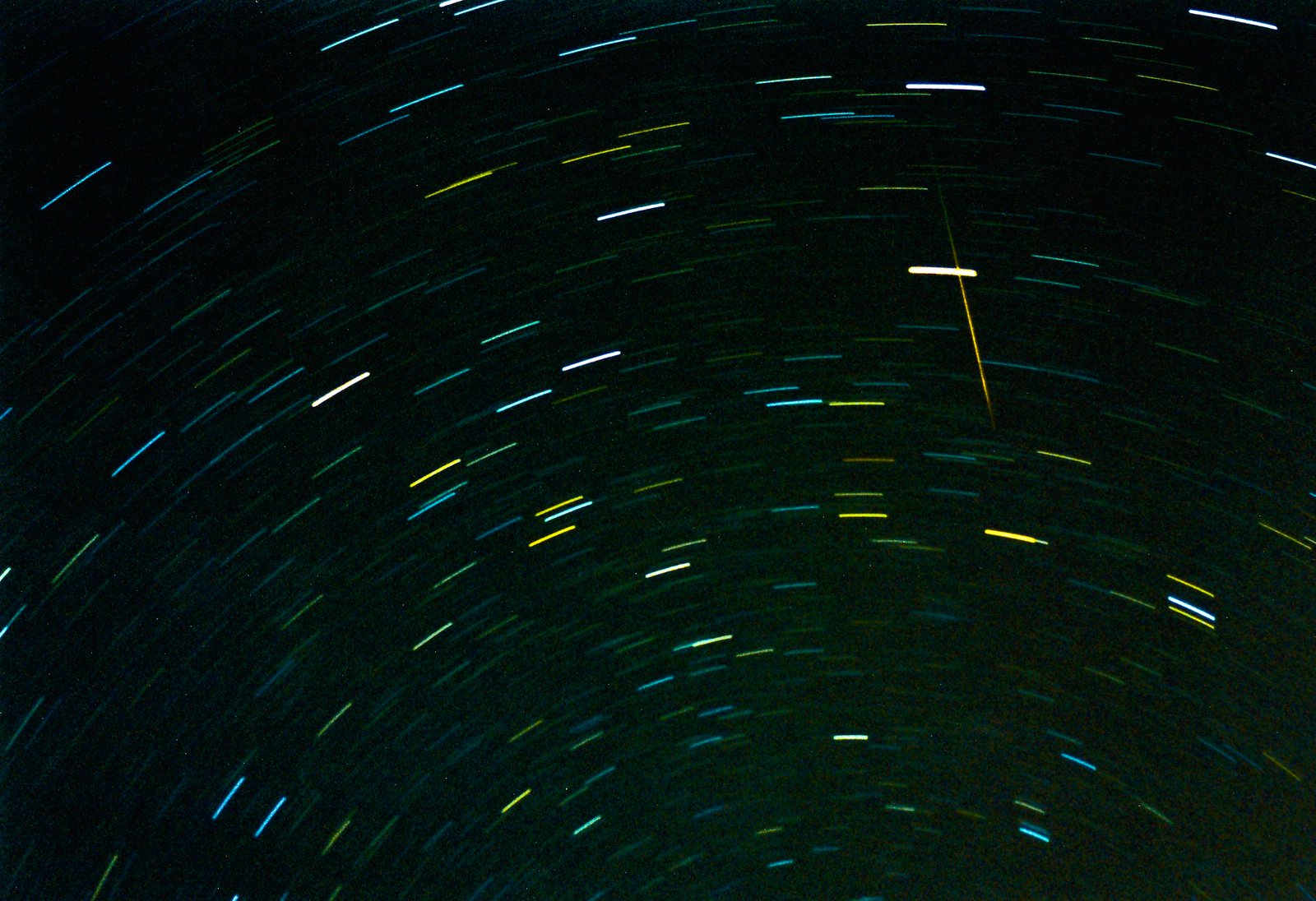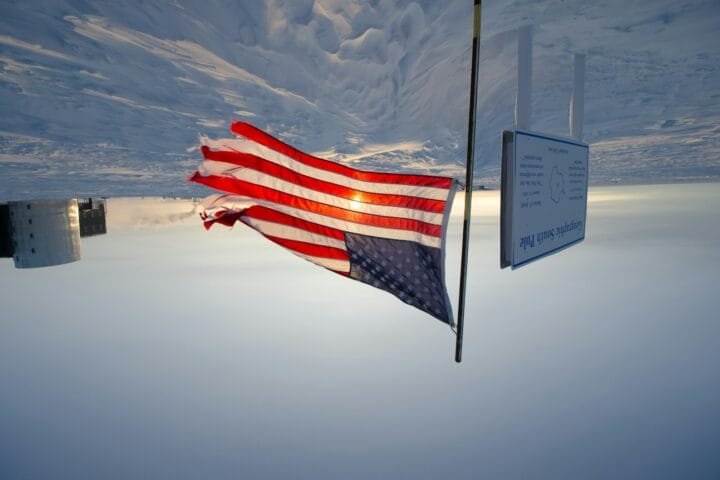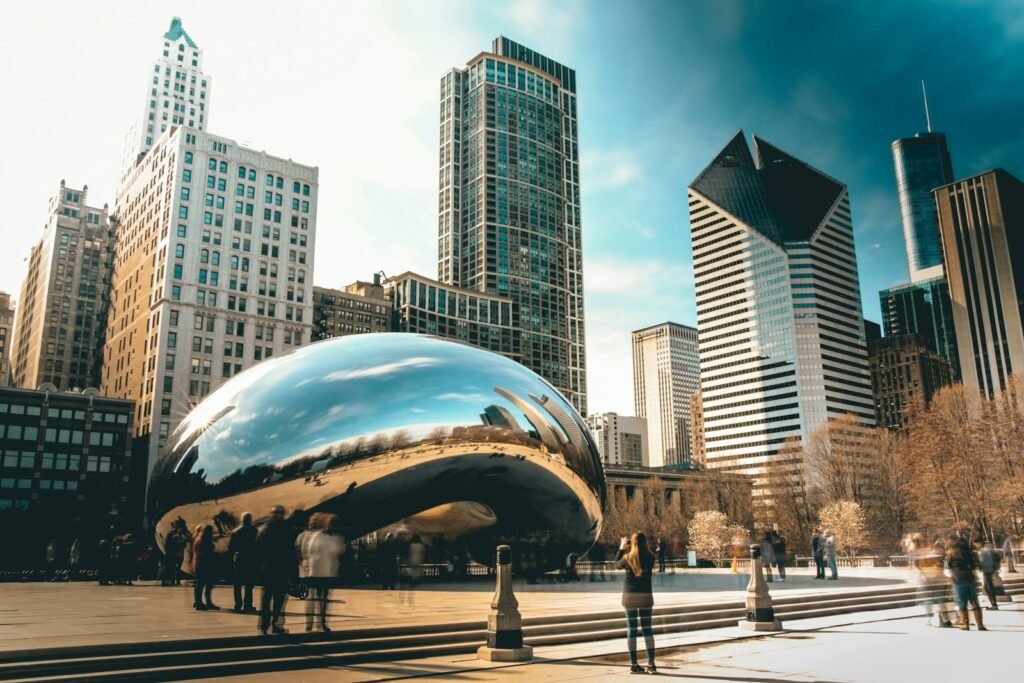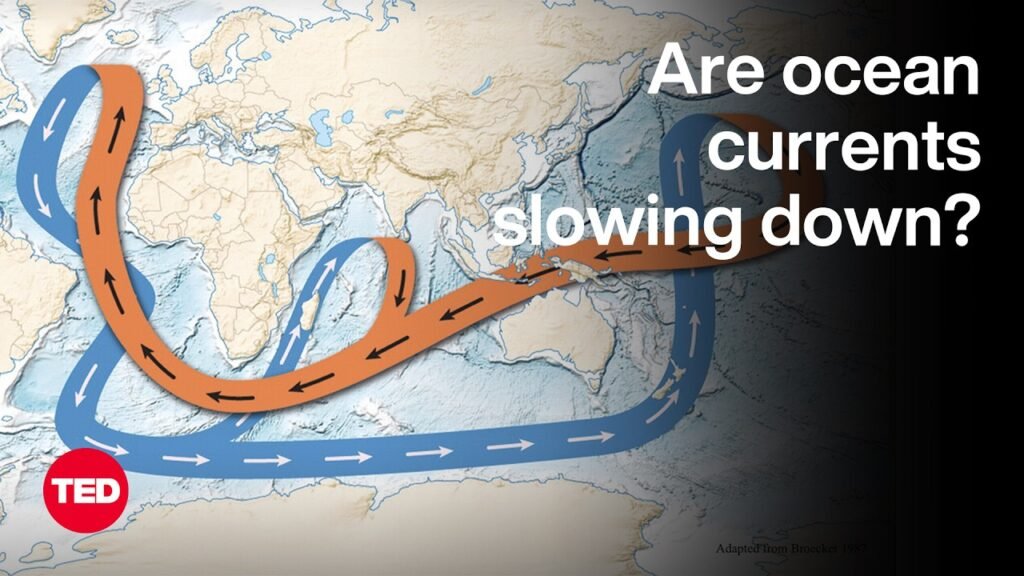by Sam Nester
It’s midnight on the east coast of Australia, sometime in November 1998. I have just turned 11 years old, and I am lying on the cold, wet boat dock of my family home, counting streams of light as they race across the clear black sky. The Leonids meteor storm, a once-in-33-year phenomenon, has reached perihelion and is casting its spectacle down upon my youthful imagination.
This solitary commune with nature, this relinquishing of control and drifting along on the sensory experience, became a pastime I promised to chase throughout life. Between childhood and adolescence, I found myself sitting atop bleached white sand dunes on Moreton Island studying emergent patterns in schooling fish or floating above the Great Barrier Reef seeing colors I’d never known. And then there were the seemingly countless years in the corner of our sprawling backyard, observing the rhythms of hibiscus harlequin bugs. Life seemed to move to the tempo of the natural world as I daydreamed beneath the towering Norfolk pine trees that lined my stretch of the Pacific Ocean.
Now, as a musician in New York, most of my days are spent leaping between rehearsals, recording sessions, teaching, and performing. This contemporary, metropolitan existence hasn’t proven the most conducive to contemplative encounters with the natural world, but that world finds its way in.
A few years ago, my artistic work began to shift to create space for a fresh perspective on our relationship to the environment. I created projects that put natural processes at the core of their design: site-specific sound and light installations powered by native plants, music composed using earthquake data and the rhythms of historic thunderstorms. Most recently I’ve been working on sound installations at the nexus of art, science and policy, collaborating with scientists from the European Joint Research Centre and policy officers from the European Commission Directorate-General for Environment.
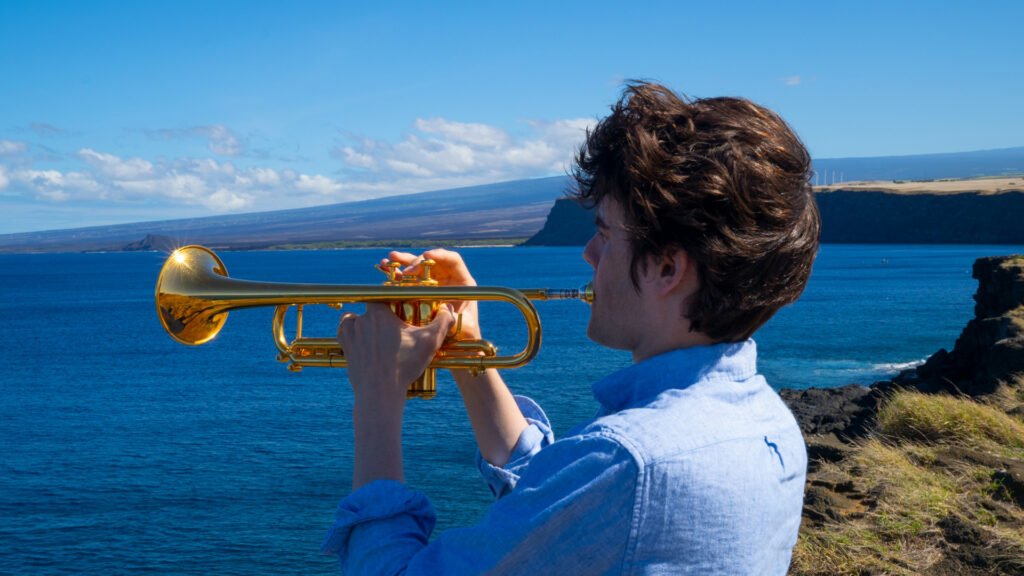
Besides moving me closer to my youthful experiences, working with scientists on the leading edge of ecological degradation research has taught me vital lessons.
Most pressing, environmental policy no longer has the luxury of remaining slow. We face the greatest challenges in human history, and it’s crucial that policymakers at all levels of government create enforceable regulations that produce environmental improvements immediately. The 2023 Intergovernmental Panel on Climate Change report has painted a bleak picture of the damage already caused by the climate crisis and asks for urgent action. Most concerning is that the IPCC has produced six reports since its initial findings in 1990, all of which prioritize reducing CO2 emissions — and yet reduction has not occurred.
But that doesn’t mean all hope is lost. While it’s unlikely we will achieve the 2015 Paris Climate Accords goal to keep temperature rise below 1.5°C of pre-industrial levels, every decimal point in global temperature maintenance acts to decrease the severity of the coming impact. It is not an all or nothing equation: 1.7°C is indeed better than 2.0°C. As the age-old adage goes, “The best time to start was yesterday. The next best time is now.”
Another lesson: Instead of bold policies, we’ve put all our faith in technology to solve the problem. I too hope technology will save us, but a diversified approach holds the potential for a safer future. Let’s continue to advance technology to turn the tide on climate change, but let’s also look to the immediate implementation of nature-based solutions. These not only give us more time to tinker with ideas for geoengineering, such as Klaus Lackner’s CO2 scrubbing artificial trees, but may help slow biodiversity loss. While it’s possible that novel technologies will help lower global temperatures, every extinction within the biodiversity crisis leading to that day is permanent — there is no bringing back the Labrador duck or the western black rhino.
Most surprisingly, my experience has taught me that science is not enough.
It may seem opportunistic for an artist whose work highlights the natural world to write this, but these are not my words alone. Frans Timmermans, former vice president of the European Commission, made the following statement in his closing remarks at the 2023 European Environment Network Conference:
Due to our training and empirical backgrounds, we think that if we’ve got the facts right, and we’re right, that automatically that will have the power to convince everyone. Sadly, we learn everyday that’s not the case…If we are unable to translate what we discover, what we see, what scares us because it is having an impact, what we know needs to be done, if we are unable to translate that in images, in words, in concepts that relate to the people who give us the support to take the measures we need, we will fail.
There is indeed a serious failure in climate and biodiversity crises messaging. We’ve lived too long with the notion that nature is inferior to us and here to serve us, and the economic fearmongering surrounding solutions to these crises has added a weight that doesn’t seem to engage action but confuses and overwhelms. In his 1990 work Le contrat naturel (incidentally, published the same year as the first IPCC report), French philosopher Michel Serres discussed making peace with the world in order to save ourselves – the creation of a contract between Earth and its inhabitants. But we cannot create a contract with that which we do not know or may have forgotten.
In 2007, and again in 2012, the Oxford Junior Dictionary (designed for seven-year-old children) removed a significant number of words related to nature in favor of words such as broadband, chatroom, and voicemail. The editors deemed these more fitting for the modern-day childhood experience. This sparked Robert MacFarlane and Jackie Morris to publish The Lost Words: A Spell Book, in the hopes of returning British children to the splendor of the world outside the virtual. Meanwhile, some 1,800 miles away in Lapland, the Indigenous Sámi children who inhabit northern Scandinavia and the Kola Peninsula have 300 words for snow.
It was Baba Dioum, the Senegalese forestry engineer, who famously made the comment that “in the end we will conserve only what we love, we will love only what we understand, and we will understand only what we are taught.” It is science that helps us understand, but it is our language, our art, and our personal experiences with the natural world that teach us to love and reconnect. Without these we have little hope in transforming the public policy that will secure the future many of us want.
The arts’ ability to facilitate meaningful introspective encounters with the material and abstract experiences of this world can, and does, inspire action. I think of Olafur Eliasson’s Ice Watch installation of 2014, in which glacial ice was collected from Greenland and allowed to melt in public spaces around major European cities. His work disrupted the daily pulse of urban life and offered the public an immediate experience of the climate crisis, creating a tangible encounter with what can still sometimes feel at a distance from our northern metropolitan existence. Echoing the words of Dioum, Eliasson and Minik Rosing issued an essay to coincide with Ice Watch in which they made the argument that:
Facts are one part; just as guilt does not inspire initiative, people will not act on facts alone. We are inspired to act by emotional and physical experience. Knowledge can tell us what we should do to achieve our goals, but the goals and the urge to act must arise from our emotions.
Affecting people, influencing emotion, and changing minds is what art does. It was the urge to stir emotion that pushed Agnes Denes to design her 1982 Wheatfield – A Confrontation, in which a two-acre field of wheat was planted in lower Manhattan (now the site of Battery Park). The golden straws of grain stared down Wall Street and the World Trade Center for months while being tended to and ultimately harvested. The work was a symbol of food, waste, commerce, trade, ecology, and economy, on land worth $4.5 billion.
And then there’s Chris Jordan’s Midway: Message from the Gyre. In a series of photographs from 2009, Jordan shows the bodies of juvenile albatross who died from consuming plastic waste on Midway Atoll. These moving and disturbing images have confronted the world with the extent to which our modern mass consumption has affected the environment. The project demonstrates that even a small ring of volcanic islands in the Pacific Ocean, some 2000 miles from the nearest major landmass, are no longer safe from plastic.
Plenty of works simply celebrating the beauty of nature are also having an influence. Ruup, designed by Birgit Õigus, are giant wooden megaphones that amplify the sounds of forests and are returning audiences to a slow appreciation of the subtlety of bustling ecosystems. In London’s Kew Gardens, Wolfgang Buttress’ Hive, an immersive sound and light installation, takes real-time data from a beehive to hum an ever-changing, generative experience of life inside a bee colony.
Our great modern memory loss of how intimately intertwined human lives are with the natural world has reached its zenith. When I arrived as one of 20 artists at the Joint Research Centre of the European Commission in 2022, an opening speech concluded with the comment that “it has gotten so bad, we called in the artists.”
Europe isn’t alone in recognizing the potential for the arts to play a role in creative solutions to the climate crisis and our growing disengagement with nature. On Jan. 30 of this year, the U.S. Environmental Protection Agency, in collaboration with the National Endowment for the Arts, announced an inaugural Artist-in-Residence Program. This initiative aims to integrate artists into the effort to reveal new ideas for water restoration and climate resilience and help advance the goals of the National Estuary Program and Urban Waters Federal Partnership. There’s a growing recognition that art, in addition to connecting with the public, helps push those who make and implement policy.
In recent years my work has afforded me audiences with more than one Australian prime minister, a handful of U.S. senators, ambassadors, a director-general of Europe, and even a sitting U.S. president. There is power in art to reach the hearts and minds of a wide array of people and help direct attention to the beauty of the natural world, the terror of our present relationship to her, and offer potential solutions for a brighter, more connected future.
As I look to the year 2031 — one year after the European Commission will have either succeeded or failed in its goal to reduce greenhouse gas emissions by at least 55% and also the year comet 55P/Tempel-Tuttle is once again due to reach perihelion on its 33-year orbit — I wonder how the global experience of the Leonids meteor storm will land. As a child watching the storm unleashed a vast universe of wonder in me, and there is potential for that same experience again.
But as our planet continues to warm, the number of extinction events increase, and we become further estranged from the rhythms of the natural world, future inspiration from the majesty of nature will be predicated on the swift implementation of enforceable policies that consider the totality of global life and longevity beyond the immediate potential effects on an economic experience some believe they are accustomed to.
Planning for 2031 or 2064 or 2097 rather than the end of this financial year seems to create a special kind of conflict in our human minds — but time can be measured in many ways. The Leonids will light up Earth’s sky for thousands of years regardless of our speed to action — how long do we want to be here to see it? How many generations of Sumatran elephants or vaquita porpoises or monarch butterflies are left? How many words for snow will be lost?
![]()
The post Facts Alone Won’t Save Us appeared first on The Revelator.
Read the full post at The Revelator.
